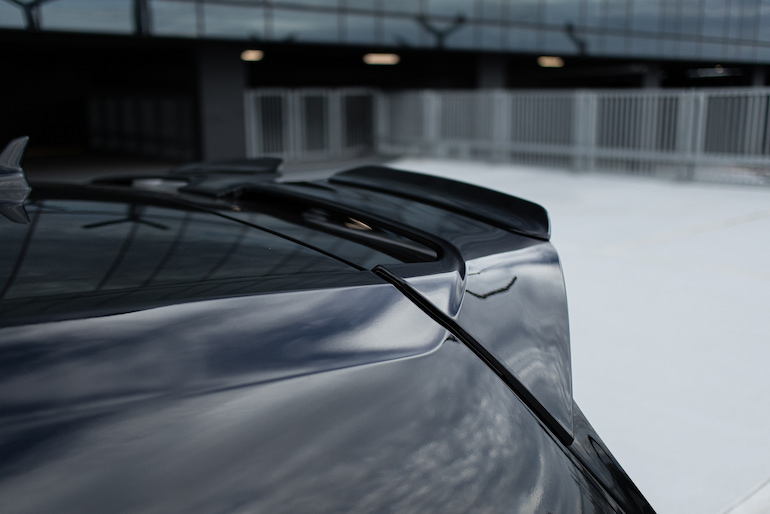Want more out of your ride? There are hundreds of upgrades all worth your cash. Some deliver more performance, others focus on comfort and convenience or up your car’s looks. Most gearheads though want raw power and won’t skimp on engine upgrades or the handling benefits that aftermarket wheels bring. With that said, balancing any power and torque gains is followed up with strengthening the chassis and adding body parts to keep tyres and wheels firmly on the ground.
Basics of Body Parts
Until the 1980s, parts that improved how the car stuck to the road were relatively few and far between. Most were the realm only in pure racing applications, where modified engines were tamed with huge rear spoilers and front splitters. This though is when production cars were introduced to aerodynamics, with models soon moving from boxy and angular shapes to curves that allowed for better air coefficients. The end goal was to improve fuel consumption (with the steep rise in fuel prices), but this also had a knock-on effect on handling, acceleration and braking performance. And what we saw in race cars soon trickled down to street cars, though in a more subtle rendition.

The Pros of Body Parts
There are two basic jobs that the different car body parts do extremely well – aerodynamics and aesthetics. The two categories often mean different price brackets, though even basic additions can improve handling and ride quality, look good and still be affordable. The main purpose though is to glue the car to the road in what is known as ‘ground effects’, or how the car handles oncoming air that wants to slow it down or throw it off course. here different parts do different jobs. Front lips redirect air over, under and to the sides of the car, side skirts prevent air from pooling up underneath, while front and rear spoilers and air dams tame stability and increase the traction at both axles.
All this significantly improves handling. The car can maintain direction even at higher speeds, corner faster and brake later. Acceleration is also improved with less air slowing it down. There’s also more feedback through the steering wheel, so you’ll know exactly what the tires are doing.
Besides this, you’ll also be turning heads, with the car getting bespoke styling that singles it out from the crowd of similar makes and models. Car owners can go with separate parts, or as most often is the case, with car body parts packaged in kits. These bring styling benefits as well as more in the way of improved handling. Add a set of performance wheels to the mix in designs that complement the look, and you’re good to go.
Body Kits Worth Considering
Body parts work better when paired. Lips kits, consisting of front spoilers, redirect air over the car, so increase downforce and keep the car glued to the road. They also deal with drag. Bumper kits replace both front and rear bumpers, help with stability at both axles and bring about a neat look. Wide body kits include wide wheel fenders, protruding side skirts and bigger and wider front and rear spoilers for a meaner stance. They also allow for bigger wheels gripping low-profile tyres, so add cornering stability. Full kits, with front spoilers and splitters, bigger side skirts and rear wings or spoilers, and diffusers to deal with air under the car work best on the track when sourced it the right materials.

Why Materials Matter?
Generally, there are four materials used in car body parts. They differ in rigidity, durability and how well they cope with impact and exposure to heat and moisture. Another major difference is weight. The higher you go the price bracket, the better the quality, so parts become more for go than show.
Fibreglass is a low-cost choice used mainly for aesthetic purposes. It lacks the rigidity and elasticity of other materials, so can crack even in minor scrapes or on impact. A few things are going for it though. It’s easy to paint, so can suit a variety of vehicles, has good UV resistance and keeps its colour even when in direct sunlight or when heated.
Polyurethane parts are on the next rung on the pricing scale, being much more durable and flexible. They’re a bit heavier though, and are susceptible to changes in temperatures, especially heat generated in heavy braking. Move up to engineered ABS plastics, with even more strength, decent performance when potholed or in direct hits, and exceptionally good weather and chemical resistance. Prices aren’t that much higher either.
But, for outright performance, the highest strength and the lowest weight, nothing beats exterior car accessories made of carbon fibre. The material is several times stronger than steel but at a fraction of the weight, exceptionally flexible, and gets the best marks in heat and chemical resistance. The combined benefits match any performance mods under the hood to deliver results worthy of a track, and with looks that far exceed anything else. The only downside is the high purchase price.

